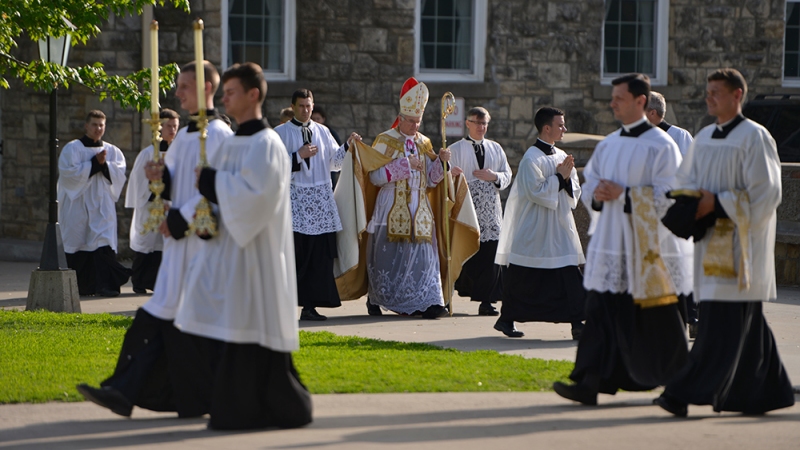This week’s long read pick is Emma Green’s ‘The Christian Withdrawal Experiment’ at The Atlantic, which looks at both the appeal and some of the questions raised by religious withdrawal from contemporary, individualistic America.
The author visited St Marys in Kansas, home to a chapter of the Society of St Pius X, an ultra-traditionalist Catholic order of priests. The lay religious community that has grown up around the SSPX chapter there meets the description of something increasingly being described as ‘tradical’: that is, radical traditionalist. The community observes Latin mass, encourages traditional sex roles in marriage, large families and strictly policed sexual morality including prohibitions on contraception, abortion and same-sex sexuality.
Green describes a place that sounds in many ways appealing: bucolic, communitarian and richly social:
The appeal of the community to those willing to abide by its moral framework is clear: unlike most small Kansas towns, St Marys is growing. Strong religious bonds appear to help a community thrive.
But there are costs as well. “Townies” (as non-SSPX denizens of St Marys call themselves) feel excluded from the thriving SSPX community and, increasingly, political influence within the town’s administration. And the strict SSPX sexual mores mean that actions which might be considered trivial within mainstream liberal society can result in ostracism. There is no space in the St Marys community for out gay and lesbian people. And Green speaks to one woman who was excommunicated simply for failing to stop a friend having an abortion.
Green’s piece draws out difficult choices implicit in the calls we see today for a return to more communitarian values. A strong in-group cannot avoid producing excommunicants as a byproduct of policing its boundaries. The contrast between St Marys and a wider, widespread moral malaise in American society points to the prosocial aspects of just such an in-group, but also a downside of ‘inclusivity’ when taken to an extreme. How can we work to strengthen the shared moral frameworks that would support a cohesive communitarian society without returning to punitive exclusion of groups that have only recently gained social acceptance?
The article also points to an emerging America in which the dream of e pluribus unum is replaced by a patchwork of ideological communities that have self-sorted to a radical degree. In this less than United States, any dream of unity coming together from multiplicity is replaced more by a kind of tense coexistence. In our world of liberal graduate cities increasingly locked in political struggle against more small-c conservative towns, and ferocious debates over the feasibility (or even desirability) of integrating segregated migrant communities into a wider culture, this feels uncomfortably familiar.











Join the discussion
Join like minded readers that support our journalism by becoming a paid subscriber
To join the discussion in the comments, become a paid subscriber.
Join like minded readers that support our journalism, read unlimited articles and enjoy other subscriber-only benefits.
Subscribe